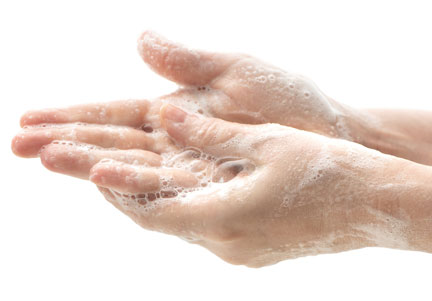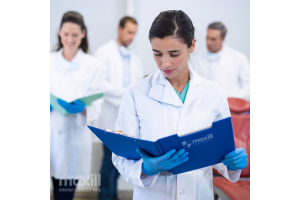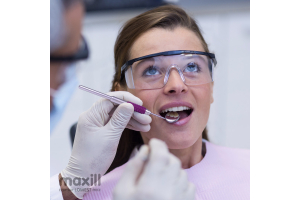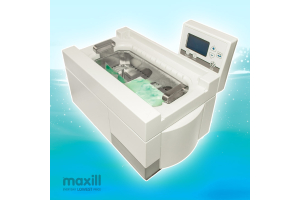Do You Have A Hand Hygiene Program?

A hand hygiene program is embedded within the contents of an office's IPAC Program and is often ill-defined.
Dental offices may be performing hand hygiene tasks, have procured the necessary products and posted directions for proper hand hygiene, however, it goes much further than this.
Whether pre, during or post-pandemic a complete hand hygiene program is required.
It is not acceptable to, as Nike states, “Just Do It”!
Routine hand washing practice have four main elements: risk management, sharps safety, PPE and hand hygiene.
Hand hygiene is the most controllable element of routine practice and at the same time, the most forgettable on a hectic day.
Being busy is not a reason to miss the key moments when hand hygiene is required.
What are the 4 moments for hand hygiene?
- Before initial client contact
- Before aseptic procedures
- After client contact
- After body fluid exposure risk
Hand hygiene technique is important to ensure all surfaces of the hands are reached equally.
See maxill’s Hand Hygiene Poster for the step by step instructions.
Hand hygiene is also tied to donning and doffing of PPE.
At various intervals during both placement and removal of PPE, there are necessary moments for hand hygiene.
The best practice approach to hand hygiene tied to PPE during additional precautions are as follows:
Donning:
- Identify and gather a required PPE based on a proper risk assessment of the task/service to be performed
- Perform thorough hand hygiene
- Don isolation gown
- Put on mask (surgical or respirator)
- Put on eye protection and face shield
- Perform hand hygiene
- Put on gloves
Note: There are 2 hand hygiene moments during the donning of PPE.
Routine practice without additional precautions states only 1 hand hygiene as step 2 and does not repeat again.
Doffing:
- Safely remove gloves
- Remove gown
- Perform hand hygiene
- Remove face shield
- Perform hand hygiene
- Remove protective eyewear
- Perform hand hygiene
- Remove mask (surgical or respirator)
- Perform hand hygiene
Note: There are 4 hand hygiene moments in the doffing of PPE.
Routine practice without additional precautions states only 2 hand hygiene moments as step 3 and does not repeat again until the last step.
Hand Care And Presentation
Hand hygiene includes hand care and presentation.
Hands must be moisturized to avoid cracks, cuts and abrasion as well as dermatitis.
The presentation of hands includes no nail enhancements such as gel build-ups, shellac topcoats and chipped nail polish.
Freshly manicured nails with new nail polish are allowed for a duration of four days and then must be changed/removed (1).
Wrists and fingers are part of hand presentation, rings, watches and / or bracelets are not permitted to be worn.
All these listed are fomites, as they have the potential to collect and transmit microbes.
What is the Dental Office's Responsibility?
Does a dental office need to spend time training and auditing staff on something as simple as hand hygiene?
Yes, as repeated training includes both compliance to target the moments of necessary hand hygiene as well as improves the technique to ensure areas are not ‘missed’.
A 6-month study in 2014-2015 was conducted amongst healthcare professionals in 4 hospitals in Ohio where 435 glove and gown removal simulations were observed (2).
The methodology used was point-prevalence study and quasi-experimental intervention to determine the frequency and sites of contamination on skin and clothing of personnel after removal of contaminated gloves or gowns at baseline vs after the intervention.
The experiment studied the correlation between contamination of the skin with fluorescent lotion and bacteriophage MS2 at baseline and post-intervention/training.
The outcomes were as follows:
- 46% (200/435) contaminated the skin during soiled glove and gown removal simulations (2)
- 60% combined skin and clothing contamination (2)
- 52.9% contamination occurred more frequently during removal of contaminated gloves than gowns (2)
Post-intervention/education:
- 18.9% combined skin and clothing contamination (41.1 % improvement!) (2)
1-3 month re-evaluation:
- 12.0% combined skin and clothing contamination (2)
In conclusion, contamination of the skin and clothing of health care personnel occurs frequently during removal of contaminated gloves or gowns.
Educational interventions that include practice with immediate visual feedback on skin and clothing contamination can significantly reduce the risk of contamination during removal of PPE.
maxill has done its homework and designed a system for hand hygiene training.
The Cross Contamination Tracking System
The maxill Reveal Cross Contamination Tracking System includes a black light and fluorescent gel along with audit forms to track training and perform audits.
The Reveal kit offers the necessary visual training as well as team building in its interactive fun approach.
One simple kit to have your hand hygiene program ready to go!
PROTIP: think outside the box and use the Reveal kit for simulated training of cross-contamination in an operatory.
Instead of OSAP’s video, ‘If Saliva Were Red’, just imagine if saliva were fluorescent!
With this it's simple to see the importance and value of the need to establish an effective hand hygiene program.
So, how does one get started?
There is no time like the present to tackle an overdue task!
Follow the checklist and worksheet below to initiate your hand hygiene program.
Set goals and map out a plan to accomplish each action task.
Devote a section to your IPAC manual for a hand hygiene program.
Add the checklist and worksheet to your written policies and procedures.
Reach out to maxill if you need assistance with your IPAC manual as maxill offers IPAC 360, a supportive service that delivers a completed IPAC manual specifically tailored to your practice.
The service involves maxill gathering all the data live or virtual and inputting that specific information into a manual geared for your practice.
Does your office have a hand hygiene program?
It does now!!!!
| Action | Y/N | Goals to Set. I Plan on Achieving the Action by: |
|---|---|---|
| Do you have an appointed IPAC Officer? | Y/N | |
| Has the IPAC Officer created a Hand Hygiene Program? | Y/N | |
| Has there been a hand hygiene staff baseline knowledge assessment performed? | Y/N | |
| Is the staff awareness and participation at an action stage? | Y/N | |
| Are there written policies and procedures specific to hand hygiene? | Y/N | |
| Does the office have the selection of 70-90% alcohol-based hand rub (ABHR) product? | Y/N | |
| Does the ABHR have a DIN or an NPN? | Y/N |
Resources 1. Best Practices for Hand Hygiene in All Healthcare Settings, 4th edition, Public Health Ontario Provincial Infectious Diseases Advisory Committee. Public Health Ontario and PIDAC April 2014 https://www.publichealthontario.ca/-/media/documents/B/2014/bp-hand-hygiene.pdf?la=en 2. Contamination of Health Care Personnel During Removal of Personal Protective Equipment. JAMA International Medicine. Curtis J. Donskey, MD. JAMA Intern Med. 2015;175(12):1904-1910. doi:10.1001/jamainternmed.2015.4535. http://archinte.jamanetwork.com/article.aspx?articleid=2457400#Introduction







